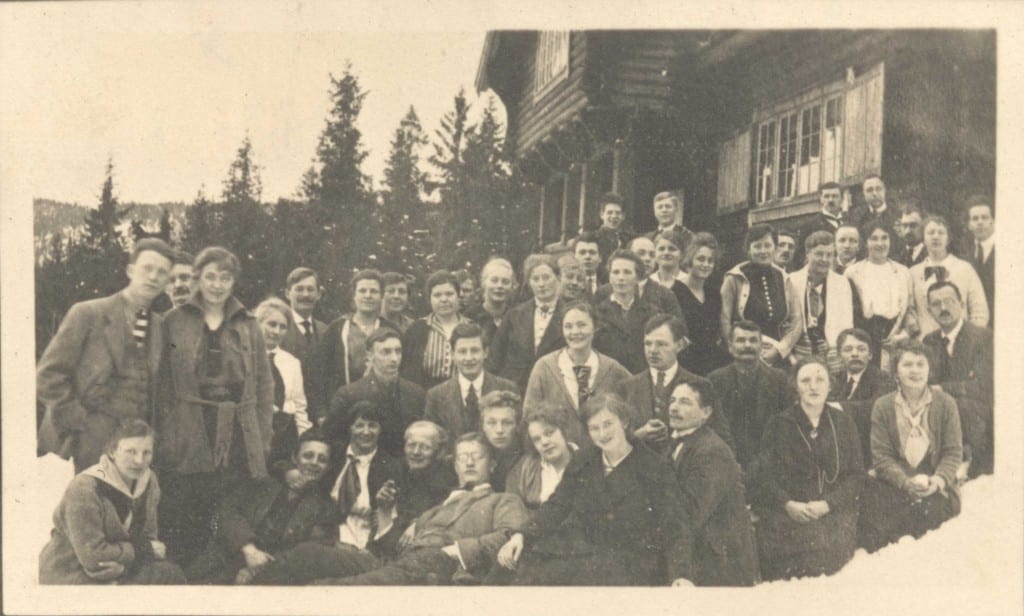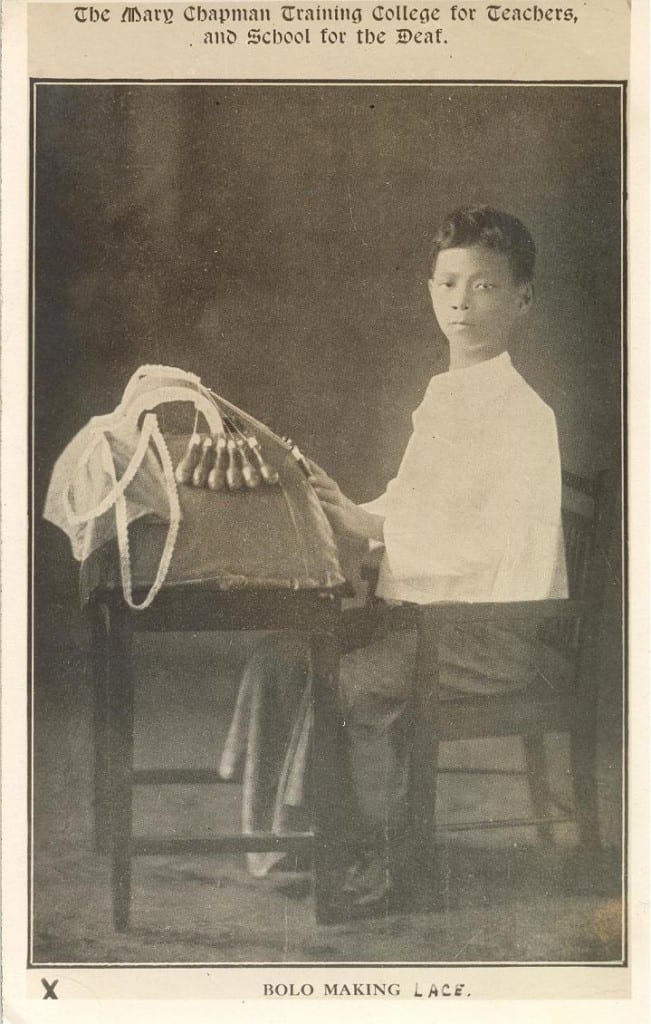By Mina Krishnan
Alexander Graham Bell (3rd of March 1847–2nd of August 1922). Although there is still controversy over who really got there first and whether he did so independently, Alexander Graham Bell is certainly widely credited with having invented what we now recognise as the telephone, a device that turns sound into electricity then back into sound, for which he was granted a patent in 1876.
Although Bell was born in Edinburgh, his father moved the family to Canada when Bell was 23, following the death of his two brothers from tuberculosis. Bell then moved to the U.S. shortly thereafter to start a teaching career. His father and grandfather were both experts in elocution and his mother started to become deaf when he was 12, which had inspired him to study acoustics and the mechanics of speech. In the 1870s he pioneered a system called visible speech, developed by his father, which was a system that indicated oral sounds by the use of written symbols; Bell used this to teach deaf-mute children to communicate with speech.
He worked with many people, for example on techniques for teaching speech to deaf people; his most famous student was Helen Keller, for whom he established a trust fund for her education at Radcliffe College. An advocate of oralism, he set up a school to train teachers of the deaf. Directly opposed to his view that communication by speech was what made humans truly human and that deaf people should communicate solely by speech and speech-reading/lip-reading, was Edward Gallaudet (son of Thomas, pioneering educator of deaf people). A fervent proponent of manualism, Gallaudet embraced deafness, rather than seeking to eradicate it as Bell did.
Not only was Bell dead-set against the use of sign-language, especially in state-funded schools – seeing it as a foreign language that had no place in the U.S. education system – he was in fact one of the earliest modern supporters of the eugenics movement in the U.S, believing deaf people should be kept apart from each other so that they would not marry or produce children.
He published Upon the Formation of a Deaf Variety of the Human Race in 1884, warning that deaf people were creating an insular, inbred ‘deaf race’ and claimed that ‘the production of a defective race of human beings would be a great calamity to the world’ and that it was necessary to ‘examine carefully the causes that lead to the intermarriage of the deaf with the object of applying a remedy’.
He attended the first International Congress on Eugenics, held in London and presided over by Leonard Darwin – son of Charles – regarding hereditary deafness and the compulsory sterilisation of deaf people for the betterment of the human race; and he was the honorary president of the Second International Congress of Eugenics, held in New York.
He also gave evidence – relating to his research on the topic of the causes of congenital deafness – at the Royal Commission on the Blind, the Deaf and Dumb, stating for example that ‘hereditary pre-disposition’ was clearly responsible as over 50% of those he studied had ‘other members of their family deaf and dumb’ and that they should therefore not inter-marry or have children.
The library has a copy of the House of Commons parliamentary paper, Report of the Royal Commission on the Blind, the Deaf and Dumb. This is also available in full from the House of Commons Parliamentary Papers (although the library’s hard copy is far easier to browse!):
http://gateway.proquest.com/openurl?url_ver=Z39.88-2004&res_dat=xri:hcpp&rft_dat=xri:hcpp:rec:1889-065644
In 1877 he married Mabel Gardiner Hubbard, who had been profoundly deaf from the age of about five following a serious illness. They had two daughters, Elsie and Marian; they also had two sons who, tragically, died neonatally. Mabel is considered to have had an immense influence on Bell’s work, having been of great inspiration and encouragement with regard to his commercial success.
The Alexander Graham Bell Association for the Deaf developed in 1956 out of the American Association to Promote the Teaching of Speech to the Deaf, which Bell had helped to organise in 1890, serving as its first president. Its aim is to help with aspects of living with hearing loss such as early diagnosis in children and the provision of resources to parents who wish their children to learn speech and speech-reading/lip-reading in order to ‘thrive in mainstream society’.
Bell had other interests besides – he was also, to give just one example, very interested in botany even as a child and later was a founding member of the National Geographic Society.
Click onto the image below for a larger size.

Some items held in the RNID library:
Mackay, James A. Sounds out of silence: a life of Alexander Graham Bell (1997)
and other books about Bell, including biographies
Winefield, Richard, Never the twain shall meet: Bell, Gallaudet, and the communications debate, (1987)
Volta Voices (1994 – present )
Volta Review (1910 – present; also from 1899 under the title The Association Review)
– journals of the Alexander Graham Bell Association for the Deaf
Government report:
House of Commons parliamentary paper, Report of the Royal Commission on the Blind, the Deaf and Dumb
Online resources available through the e-library:
Jamieson, James, Alexander Graham Bell: Eugenicist, Mankind Quarterly 2001. 42 (1), 65-76.
Greenwald , Brian H, The Real “Toll” of A. G. Bell: Lessons about Eugenics – Sign Language Studies 2009. 9 (3).
Uncertainty over whether AGB was quite so anti-manualism:
The question of sign-language and the utility of signs in the instruction of the deaf: two papers by Alexander Graham Bell (1898). Journal of Deaf Studies and Deaf Education 2005 Spring;10(2):111-21.
(Freely available Via PubMed)
Freely available web resources:
There is plenty of controversy over who was the real inventor of the telephone:
Bell ‘did not invent telephone’ (German research scientist J. Philipp Reis did):
http://news.bbc.co.uk/1/hi/sci/tech/3253174.stm
U.S. ruling that an Italian inventor (Meucci) did:
http://www.guardian.co.uk/world/2002/jun/17/humanities.internationaleducationnews
Or was it Elisha Gray?!
http://www.britannica.com/EBchecked/topic/242617/Elisha-Gray
Just two of many biographies:
http://www.biographi.ca/009004-119.01-e.php?id_nbr=7894
http://www.disabilitymuseum.org/dhm/edu/essay.html?id=59
‘History through deaf eyes’ – Language & Identity, Gallaudet University:
http://my.gallaudet.edu/bbcswebdav/institution/Deaf%20Eyes%20Exhibit/Language-01oraledu.htm
 click onto the images for a larger size.
click onto the images for a larger size.
 Finally some Norwegian Deaf athletes – I suppose from 1919 or so. The photos are probably connected with Selwyn Oxley’s visit to Scandinavia when he went to several Deaf Institutes.
Finally some Norwegian Deaf athletes – I suppose from 1919 or so. The photos are probably connected with Selwyn Oxley’s visit to Scandinavia when he went to several Deaf Institutes. Close
Close






